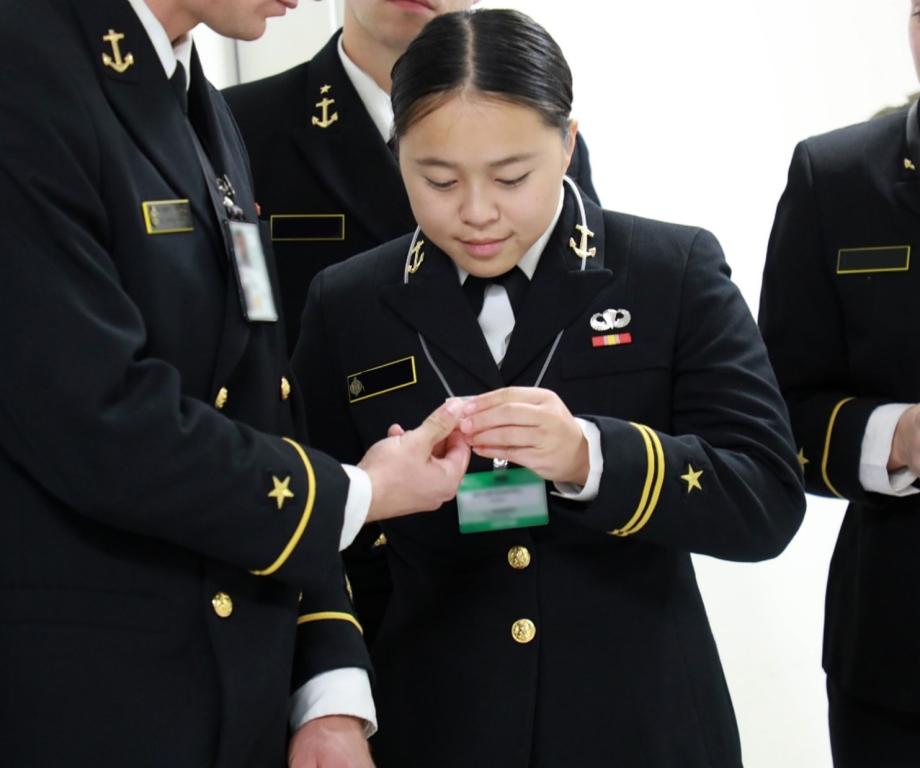
Students from the U.S. Military Academy and U.S. Naval Academy are taking their education to space. Nuclear engineering students are leaning on mentorship from researchers at the Department of Energy’s Oak Ridge National Laboratory to complete design concepts for a nuclear propulsion rocket to go to space in 2027 as part of the Defense Advanced Research Projects Agency DRACO program.
DRACO, the Demonstration Rocket for Agile Cislunar Operations, will be a proof-of-concept design that determines the feasibility of a nuclear thermal rocket producing thrust for space travel to the area between Earth and the moon. If DRACO is successful, the technology may be used to travel to Mars and beyond.
"It has been rewarding to work in close connection with the national labs and Naval Academy students to design a solution to a unique challenge in nuclear engineering," said Military Academy Cadet Gabrielle Hall, class of 2024. "The scope of our education is being challenged and pushed beyond boundaries as we apply our understanding of radiation shielding to the broader space environment."
During the first phase, ORNL assisted in fuel qualification for reactor design concepts. In summer 2023, DARPA began phase two, calling for a full system design. With expertise in nuclear engineering and propulsion, students from the service academies were asked to use their capstone projects to contribute to this new body of knowledge.
“ORNL has an opportunity to share our modeling and simulation capabilities with future military leaders,” said Dianne Ezell, an ORNL expert in understanding the impact of extreme environments on nuclear components. “We’ll look at understanding materials exposed to radiation and temperature ranges from cryo levels to over 2,000 degrees Celsius.”
The teams of students are looking at three different parts of the design. One team from the Naval Academy will create a radiation map to determine how radiation will impact various systems on the rocket when it’s in operation. A team from West Point will design shielding to protect the instruments and equipment from radiation. The other team from the Naval Academy will look at a way to protect the nuclear material in the event of a failure. Collectively, these three teams will be pushing technology to new heights for possible future excursions to the outer solar system.
Brandon Wilson, a nuclear engineer specializing in experiment design and instrumentation at ORNL, is mentoring the students through the challenges specific to their part of the rocket. “I think it’s just a win-win. Anytime you can collaborate with different government agencies and groups, you get an infusion of new perspectives and ideas which benefits everyone involved on the project.”
LCDR John Joyce, an instructor for mechanical and nuclear engineering at the Naval Academy, said his students were invigorated with a visit to ORNL in October, 2023. Common sentiments included how the visit to ORNL made the project feel real. “They don’t view their part in this project as another math problem or homework assignment, but an opportunity to develop well-crafted and innovative solutions. Dr. Ezell's team have made the students feel like they are a part of the team and that this is more than just an exercise,” said Joyce.
“It’s exciting to see the creativity of the cadets and midshipmen in designing their portion of the rocket,” said Ezell.
UT-Battelle manages ORNL for the Department of Energy’s Office of Science, the single largest supporter of basic research in the physical sciences in the United States. The Office of Science is working to address some of the most pressing challenges of our time. For more information, please visit energy.gov/science.



